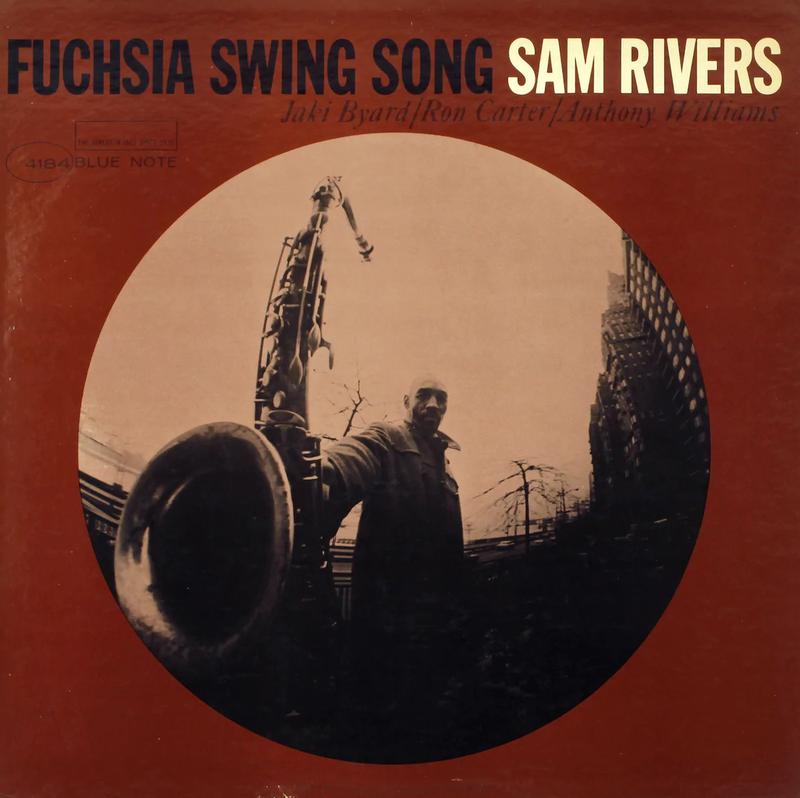Sam Rivers' Mid-Sixties Masterpiece
"Fuchsia Swing Song" captures the thrill of transition between bop and avant-garde
In the mid-1960s, just as rock ‘n’ roll was displacing jazz as America’s foremost popular music, Blue Note Records took a bold but commercially disastrous foray into the avant-garde, signing such adventurers as Andrew Hill, Eric Dolphy, Ornette Coleman, Don Cherry, Graham Moncur III, and Cecil Taylor. It was a similarly risky move for today’s corporate-owned Blue Note to start reissuing some of these artists’ albums, a few years back, and on deluxe vinyl no less, but it must have paid off, because the titles keep coming.
The latest, tenor saxophonist Sam Rivers’ Fuchsia Swing Song, on Blue Note’s Classic Vinyl series, is one of the most satisfying—a lesser-known but startling classic of the era that splendidly holds up. Rivers would later scale the peaks of the avant-garde, as a pioneer of New York’s “jazz loft” movement in the 1970s. But in December 1964, when he recorded this, his debut album as a Blue Note leader, he was still grappling with Charlie Parker’s bebop harmonies, Ornette Coleman’s free jazz, and Sonny Rollins’ hefty tone and staccato phrasing—trying to fuse them all into a new, distinctive sound, and the experimentalism, even after nearly 60 years, remains fresh, audacious, exciting.
This is also accessible music. The album’s six tracks—all composed by Rivers—are deeply grounded in ballads or blues. In his solos, he chops up bar structures, alters rhythms, disrupts the flow of a passage with substitute chords, fractured glissandi, or sometimes blank space, but he never loses touch with the melody, and there is, always, melody. The highlight, “Beatrice,” dedicated to Rivers’ wife, may be the most gorgeous ballad in all of jazz. Other tenor players have covered it in their own lovely ways—notably Stan Getz and Joe Henderson—but Rivers’ original heaves a languorous intensity, not just romantic but sensuous, lusty.
Some of the intensity stems from Rivers’ drummer, Tony Williams, not quite 19 but already a force of nature, of the cosmos, crisscrossing rhythms and rhythms within rhythms, intuiting just when to bring which layers—which combinations of beat and color—up to the fore and which to keep back as sizzling atmosphere. Rivers’ melodies and stylings make your ears pick up; Williams’ propulsions make your head spin.
The two, both from Boston, had been playing with each other since Williams was just 13. (Rivers was 20 years his senior. Neither is still with us, Rivers having died in 2011 at age 88, Williams in 1997 at 51.) By the time this album was recorded, Williams had been playing with Miles Davis for over a year. In the summer of ’64, he urged Miles to hire Rivers as his new tenor saxophonist, replacing George Coleman. It didn’t ast; Rivers’ abrasiveness didn’t mesh with Miles’ cool, as you can hear on the one album that featured this version of the band, Miles in Tokyo, released five years later. (Just as well: Miles replaced Rivers with Wayne Shorter, the magic ingredient in his “Second Great Quintet” one of the greatest ensembles in all of jazz.) In August ’64, one month after the ill-starred session, Williams recorded Lifetime, his debut album on Blue Note, for which he hired Rivers as a sideman—who made such a good impression that the label signed him up too. Which led to Fuchsia Swing Song.
For this session, Williams brought along Ron Carter, the bassist from Miles’ group. Rivers recruited pianist Jaki Byard, another longtime collaborator from Boston, who by this time was playing with Charles Mingus and Eric Dolphy. The interplay among these four musicians is staggering, the more so, the closer you listen, but not ostentatiously so. They veer in and out of each other’s way, first in synch, then in contrast, then along some middle path that’s heading you-don’t-know-where until you do, then everything seems perfectly in place.
The sound, mastered by Kevin Gray from Rudy Van Gelder’s analog tapes, is very good. Rivers’ horn is clear and brassy. Williams’ drumkit is thwackily percussive, the cymbals pulsing with metal and air. Carter’s bass is a bit buried in the mix, especially on the first track (which generally sounds more submerged than the others), and Byard’s piano seems a bit hooded, as is true of may RVG sessions. Their tones, dynamics, color—their characters—emerge more fully during their solos. The sound quality overall is a notch or two below the superb 45rpm two-LP reissued by Music Matters Jazz a dozen years ago. MMJ is long-defunct, but its website is still functioning, and I’m told there may still be a couple copies of the Rivers for $100 each. If my copy disappeared, I’d fork over that much for another.
In any case, this is a masterpiece of modern jazz. If $100 is too steep a price, or if those last couple MMJs are gone, the Blue Note Vinyl Classic, for far less, is more than good enough.












































.png)








